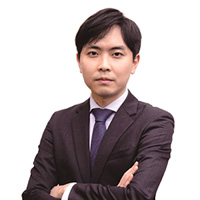Folk museum eyes turning Korean traditions relatable
By Choi Si-youngPublished : June 12, 2024 - 14:35

Making Korean traditions more relatable and accessible to children is what the National Folk Museum of Korea plans to do this year, the new director of the state-run museum said Wednesday.
Jang Sang-hoon, the NFMK director, said in the second half of the year, special exhibitions will take place on “kkokdu,” the traditional Korean wooden figurines used on biers, and on coffee, a drink that marks 140 years of use in Korea this year.
“We intend to have those exhibitions explore something universal in human history -- things people today can identify with,” Jang said at his first press conference since taking office a month ago.
The museum will back collaborations outside the country as well. The Korean Cultural Center Australia and the Metropolitan Museum of Manila in the Philippines will host “Korean Knots,” a special exhibition featuring varieties of “maedeup.” The traditional Korean knots are used as ornaments for objects ranging from murals to paintings to dolls, including knives and axes during the New Stone Age.
Jang added that he would push for distributing what he calls the “Korean Culture Box” to overseas Korean Cultural Centers. The box contains objects shedding light on Korean traditions, such as Hangeul and hanbok.
“The Korean Cultural Centers in the Philippines, Iran and the United Kingdom will receive our box this year,” Jang said, noting his museums have so far reached out to 24 centers out of 39.
Outreach to children is just as important as appealing to global audiences, according to 55-year-old Jang, who served as director of the National Museum of Korea Children’s Museum in 2020. The following year, he was named to lead the Jinju National Museum, an NMK branch, before taking over his current job.
Celebrations like Lunar New Year and Chuseok make up some of the topics the folk museum hopes to educate children about. Elementary school teachers will be given museum-produced content on Korean traditions, museum officials said, explaining that putting together an encyclopedia on folklore for children is a long-term project.
Meanwhile, Jang discussed plans underway to relocate the museum to Sejong City. “What we’re going to do mostly this year is decide on the building landscape. We expect to open there by 2031,” he said, referring to a national project to set up a new complex dedicated to state-run museums, including those on architecture and design.
When asked how he expects a growing global audience when relocated to Sejong, a de facto administrative capital that’s over two hours from Seoul, Jang highlighted looking at the bigger picture.
“There is this greater cause behind why we should move in the first place,” Jang said. “Seoul is already overcrowded, culturally speaking, with all the institutions but Sejong isn’t. We have to make Sejong just like Seoul in the Chungcheong areas,” Jang noted.
He also said that there is an effort underway to open a section on world culture, which will appeal to a wider global audience, within the current folk museum.








![[Today’s K-pop] Blackpink’s Jennie, Lisa invited to Coachella as solo acts](http://res.heraldm.com/phpwas/restmb_idxmake.php?idx=644&simg=/content/image/2024/11/21/20241121050099_0.jpg&u=20241121172748)









![[Today’s K-pop] Babymonster logs 100m views with ‘Drip’ music video](http://res.heraldm.com/phpwas/restmb_idxmake.php?idx=642&simg=/content/image/2024/11/22/20241122050051_0.jpg&u=20241122172213)